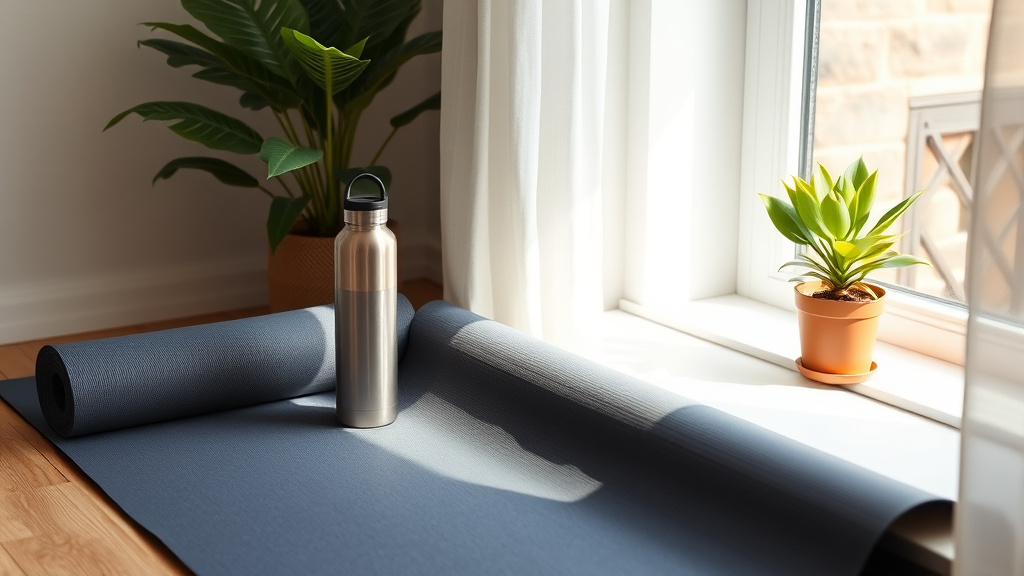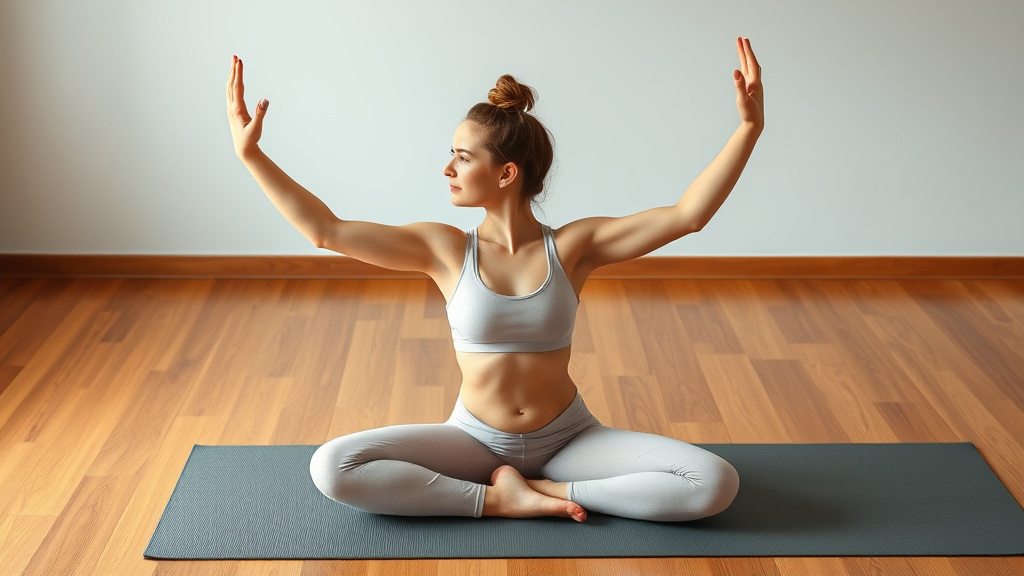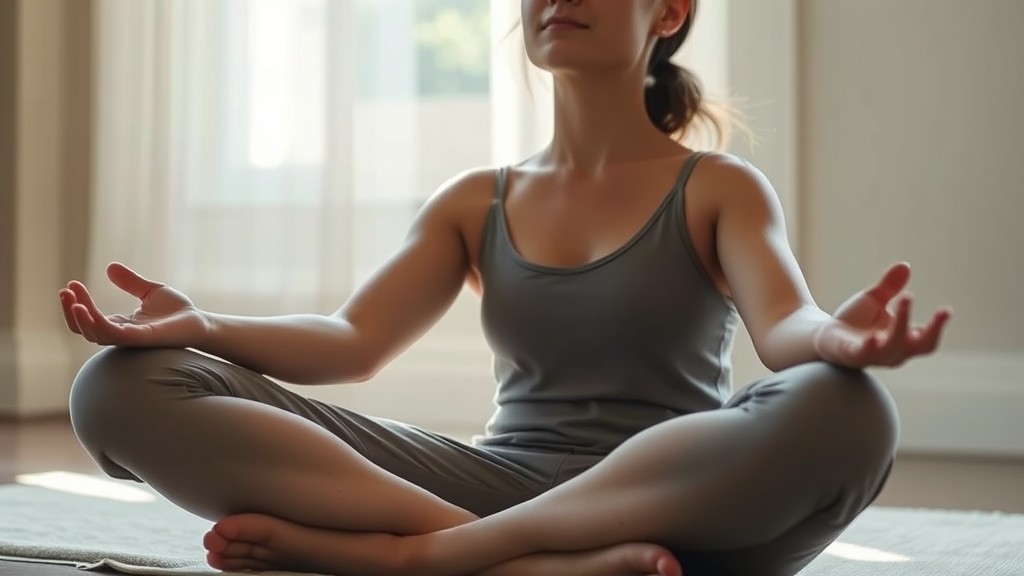Beginner’s Guide to Yoga at Home: Step-by-Step 2025
Embarking on a beginner’s guide to yoga at home opens the door to a journey of physical vitality, mental clarity, and emotional balance. Whether your goal is flexibility, stress relief, or a structured pathway toward a wellness lifestyle, practicing yoga at home can be both accessible and transformative. This guide aims to provide a comprehensive, step-by-step approach to starting your yoga journey, emphasizing posture alignment, breathing techniques, mindfulness, and relaxation methods that benefit both body and mind. With consistency, patience, and the right mindset, yoga can become a natural part of your daily routine, fostering long-term health and vitality.
Yoga’s many benefits extend beyond mere physical flexibility; it cultivates a sense of mindfulness and inner peace that radiates into every aspect of life. For beginners, the thought of practicing yoga at home might seem overwhelming, but with the right guidance, it becomes an achievable and enjoyable pursuit. Integrating a home yoga routine can enhance your overall wellness lifestyle, boosting core strength, reducing stress, and improving sleep quality. As you progress, you’ll find that yoga isn’t just about physical postures but a holistic practice that nurtures your mental and emotional well-being, making it an essential component of a healthy, balanced life.

Why Start Yoga at Home as a Beginner
Convenience and Comfort
One of the most compelling reasons to begin practicing yoga at home is convenience. No longer do you need to commute to a studio or adhere to strict class schedules—your mat is always just a few steps away. This flexibility is especially valuable for busy professionals and young adults juggling multiple responsibilities. Practicing yoga at home offers a safe, comfortable environment where you can focus solely on yourself without worrying about others’ judgments or distractions. The peace of your own space allows you to fully embrace mindfulness and relaxation techniques, making it easier to connect with your breath and body.
Creating your personalized space for yoga enhances your willingness to practice regularly and helps develop a consistent routine. You can designate a corner in your living room, dedicate a quiet spot on your balcony, or even set up a small corner with your favorite soothing décor. As you settle into this environment, you’ll cultivate a sense of ritual that reinforces your commitment. Moreover, practicing yoga poses for beginners like the mountain pose or child’s pose in your familiar surroundings not only boosts your confidence but also helps you listen more deeply to your body’s needs, gradually fostering greater flexibility and postural awareness.
Building a Consistent Routine
Starting with a regular home yoga routine is key to experiencing the true benefits of yoga practice. Small, daily sessions—whether ten minutes in the morning or a quick evening flow—can serve as powerful anchors for your day. Consistency helps develop muscle memory, improves posture alignment, and deepens your breathing techniques, all of which contribute to improved mental clarity and physical resilience over time. When yoga becomes part of your daily ritual, it’s easier to tap into mindfulness and relaxation techniques that combat stress and promote emotional stability.
A structured routine also allows you to track your progress, gradually increasing the intensity or complexity as your strength and confidence grow. By dedicating a specific time each day for yoga, you foster discipline and create a sacred moment of self-care amid the chaos of daily life. This consistency will not only support your physical health but will also cultivate a sense of inner calm that persists beyond your mat, reinforcing a wellness lifestyle rooted in balance and mindfulness.
Essential Tips for Beginners Practicing Yoga at Home
Setting Up Your Space

A calm space makes home yoga more enjoyable.
Creating a dedicated yoga space at home is fundamental for a successful practice. Choose a quiet, clutter-free area with enough room to incorporate movement comfortably. Natural light is ideal, as it enhances feelings of calmness and positivity. Lay down a comfortable yoga mat—yoga mats for beginners are designed to provide stability and cushioning, reducing the risk of slipping and making your experience safer. Incorporate soothing elements like candles or calming music if it helps you relax and get into the right headspace.
Keep your space simple but inspiring. Adding plants, soft blankets, or aromatherapy can elevate your experience and deepen your mindfulness. Remember, consistency in your environment signals to your brain that it’s time to breathe deeply, relax, and focus. Over time, your home yoga routine will become a cherished ritual, conducive to nurturing both your body and your mental wellness.
Choosing the Right Gear
While yoga is often thought of as a minimalist practice, the right gear can significantly enhance your experience. A high-quality, non-slip yoga mat provides stability for yoga poses for beginners like the tree pose or warrior I. Comfortable, breathable clothing allows free movement and helps you stay relaxed throughout your session. If you wish, you can also include props like blocks and straps, which make certain poses more accessible and improve posture alignment.
Investing in good gear encourages consistency and makes your practice more enjoyable. Over time, you might explore different yoga styles, from Hatha to Vinyasa, or incorporate tools like cushions for seated poses or bolsters for relaxation techniques. As you grow in your practice, these accessories become vital for progressing safely and effectively while deepening your engagement with yoga’s physical and mental benefits.
Starting with Simple Poses
For any beginner, mastering simple poses lays the foundation for more complex postures and promotes habit formation. Focus first on mountain pose, child’s pose, and downward dog to build strength, flexibility, and confidence. These positions are excellent for breathing techniques and fostering mindfulness—key aspects of a holistic wellness lifestyle.
Incorporate morning yoga stretches to energize your day, or unwind with gentle evening flows that ease tension accumulated from daily stressors. Remember, consistency is more important than intensity; gradually increase your practice time as your body becomes more accustomed to the movements. Learning proper posture alignment from the get-go helps prevent injuries and ensures you achieve maximum benefits, including improved core strength and relaxation.
7 Easy Yoga Poses for Beginners
Mountain Pose
Begin your practice with mountain pose (Tadasana). This foundational pose promotes proper posture, increases awareness of body alignment, and improves posture. Stand tall with feet together, arms at your sides, shoulders relaxed, and gaze forward. Breathe deeply to enhance mindfulness and engage your core muscles, maintaining a strong, balanced stance that sets the tone for your entire routine.
Child’s Pose

Gentle poses help beginners build confidence.
Child’s pose (Balasana) is perfect for relaxation and restorative therapy. Sit back on your heels, stretch your arms forward, and rest your forehead on the ground. This pose relieves tension in your back, promotes calming breathing techniques, and supports mental wellness by encouraging introspection. Use it as a calming break whenever you need to reset your focus.
Downward Dog
Downward dog (Adho Mukha Svanasana) is an energizing pose that stretches your hamstrings, calves, and shoulders. Start on your hands and knees, lift your hips, and straighten your legs, forming an inverted V shape. Focus on breathing evenly as you strengthen your arms and core, fostering flexibility and serenity simultaneously.
Cat-Cow Stretch
This gentle flow between cat (Marjaryasana) and cow (Bitilasana) stretches your spine, relieves tension, and improves posture alignment. Begin on all fours, alternating between arching your back downward and lifting your head and tailbone. This movement facilitates mindfulness and emphasizes mindful breathing, essential for stress relief.
Warrior I
Warrior I (Virabhadrasana I) energizes and empowers. Step one foot forward, bend your knee, and lift your arms overhead, gazing forward. This pose builds core strength, stability, and confidence—qualities vital for embracing a wellness lifestyle. It also encourages focus and perseverance, which can translate into daily life.
Tree Pose
Tree pose (Vrikshasana) promotes balance, stability, and flexibility. Shift your weight onto one foot, place the sole of the other foot on your inner thigh, and bring your palms together at your heart center. Focus on your breath to deepen concentration, and feel your connection to the present moment.
Corpse Pose
Conclude your practice with corpse pose (Savasana). Lie flat on your back with arms relaxed at your sides. Close your eyes, breathe naturally, and allow your body to absorb the benefits of your practice. This pose encourages full relaxation, helping to lower stress levels and cultivate mindfulness.
How Yoga at Home Supports Mental and Physical Health

Yoga supports both physical and mental health.
Practicing yoga at home uniquely supports both mental and physical health by integrating relaxation techniques, breathing methods, and mindful movement into daily life. Regular engagement fosters greater flexibility, enhances posture alignment, and develops core strength—all critical for preventing injuries and improving daily function. Simultaneously, the calming effect of breath control and meditation reduces cortisol levels, alleviating anxiety and depression. These mental health benefits are especially important for busy professionals or young adults under constant stress, as yoga provides a self-sufficient, accessible method for stress relief and emotional resilience.
Moreover, establishing a home yoga routine can serve as a catalyst for adopting other healthy habits, such as healthy eating and regular physical activity. It creates a cycle of positive reinforcement that encourages a more holistic, wellness-oriented lifestyle. The beauty of practicing yoga at home lies in its adaptability, allowing for personalized sequences, whether you prefer morning yoga stretches to energize your day or restorative poses at night to promote sleep. Over time, the consistency of your practice enhances your overall sense of well-being, transforming yoga from a simple exercise into a vital part of your holistic health approach.
FAQs about Beginner’s Guide to Yoga at Home
How long should I practice yoga daily?
For beginners, starting with 10 to 20 minutes daily is effective. As your strength and flexibility improve, you can extend your sessions to 30 or even 45 minutes. The key is consistency; regular practice yields more benefits than sporadic, lengthy sessions.
Do I need special equipment for home yoga?
While a good-quality yoga mat is essential, additional gear like blocks or straps can enhance your poses and improve posture alignment. Wearing comfortable, breathable clothing also makes a significant difference. You don’t need fancy equipment—simplicity and consistency are more important.
Can yoga replace regular workouts?
Yoga can complement your overall fitness routine, offering benefits like increased flexibility, core strength, and stress relief. However, depending on your goals, you may also need to incorporate cardio or strength training exercises. A well-rounded fitness routine often includes yoga as an integral part.
Conclusion
Starting a beginner’s guide to yoga at home is an excellent way to embrace a healthier, more mindful, and balanced lifestyle. With a dedicated space, the right gear, and simple yoga poses for beginners, anyone can cultivate strength, flexibility, and mental clarity. Practicing regularly not only enhances physical well-being but also nurtures mindfulness, stress relief, and overall emotional resilience—cornerstones of a wellness lifestyle. As you develop your routine, remember that patience and consistency are your best allies on this journey. By integrating yoga into your daily life, you create a sustainable practice that supports your long-term health, energy, and happiness. Explore more fitness routines in our Fitness Hub to stay active and balanced every day.

